San Diego’s native bees, plants are linked for life
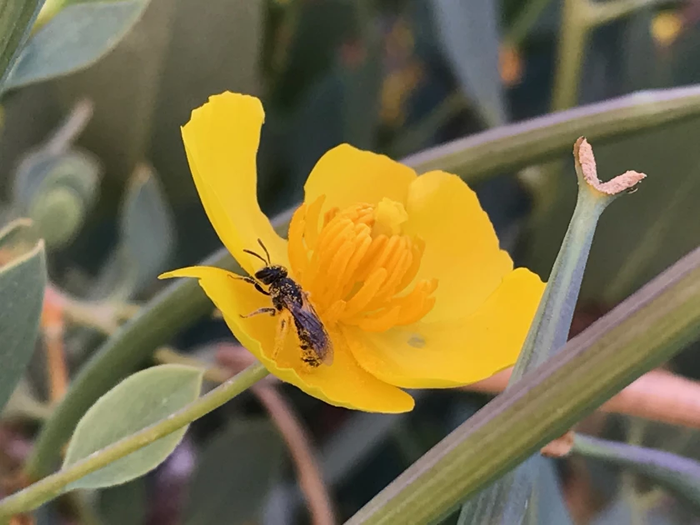
Channel Islands tree poppy, Dendromecon hardfordii, has lots of pollen to offer.(Leah Taylor)
Specialized pollinators, crucial to food supply and biodiversity, are at risk; here’s how to help them
Native bees belong to a group of animals that we call pollinators, and they play a crucial role in the biodiversity of our plants, flowers, fruits, vegetables, landscapes and crops that sustain our environment and food supply. Other animals that we appreciate as pollinators are non-native bees like the honeybee, beetles, ants, birds, bats and even mice.
Bees are immensely diverse, with an estimated 20,000 species worldwide, of which approximately 3,600 species are native to North America, and 700 species can be found right here in San Diego. Because many native bees have become specialized pollinators of certain native plants, their size and appearance range greatly. North American species range from as small as one-twelfth of an inch to more than 1 inch long. Their colors vary, too, in hues from white to black — including red, brown, orange, yellow, blue and even a metallic green.
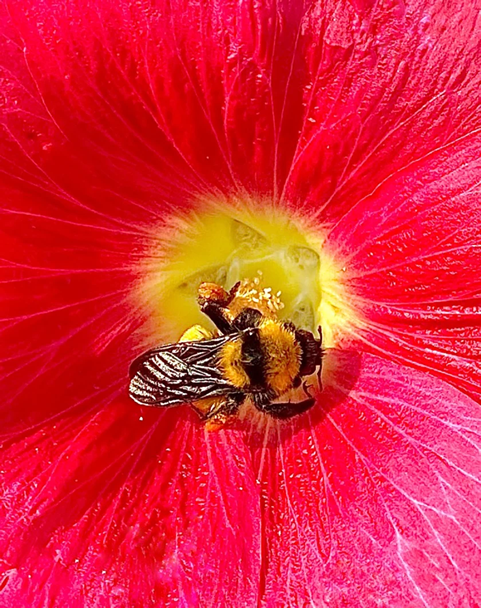
Hollyhock, Alcea spp., of the mallow family attracts pollinators in hardiness zones 4 to 10.(Jodi Bay)
Nearly all species of flowering plants require pollination to produce new seeds and fruits, and to sustain their genetics. Animals are more effective than wind when it comes to pollination. Plants attract pollinators by offering food in the form of pollen and nectar, shelter, nest-building materials and a place to find a mate.
The energy that powers pollinator survival comes from sugars in nectar, and the proteins, fats, vitamins and minerals in pollen grains. Native bees exhibit a behavior called “flower constancy,” meaning they repeatedly visit flowers of one particular plant species on any given foraging trip. This makes them effective pollinators, getting the right pollen to the right sources.
When you are out and about in San Diego, take time to observe the copious different flower morphologies. You might be seeing the tiny clusters of flowers on a ceanothus, a perfect fit for the mouthparts of a butterfly; a cactus flower visited by digger bee Diadasia australis, a cactus pollen specialist; or perhaps the very large open petals of a California poppy, which is visited by a wider variety of pollinators. Every one of these plants has a specific set of pollinators that can do the job.
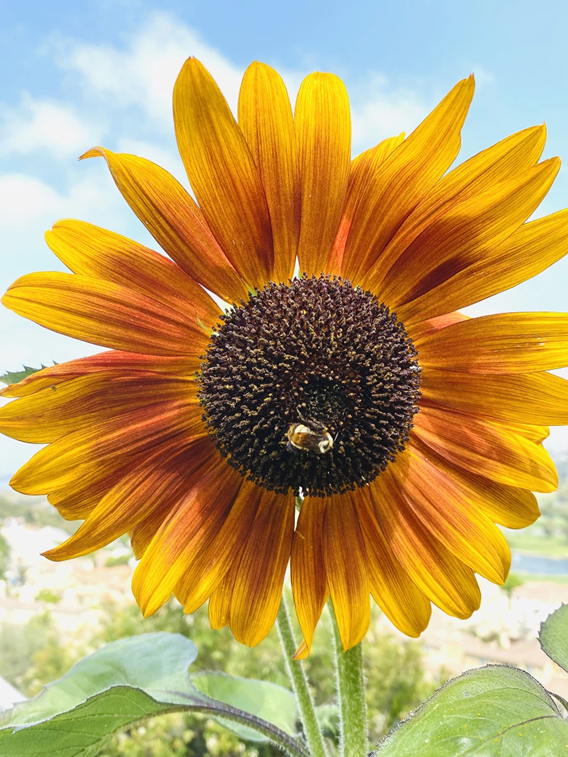
Sunflowers have heavy, sticky pollen, requiring a pollinator to move it from flower to flower, producing the seeds we snack on.(Jodi Bay)
San Diego native bees such as Andrena spharalceae, of the mining bee family, like to nest in sandy soil, another option in your garden for habitat variety. Mining bees (family Andrendiae), furrow bees (Halictus spp.) and many others mostly live a solitary life, with a single female doing all the work to build a nest, collect resources to feed larvae, and lay eggs to start the life cycle all over again.
Two-thirds of native bee species live in nests underground in complex tunnel systems designed to protect the developing larva from predators, fungus, weather conditions and other diseases. Other native bee species such as leafcutter bees and mason bees prefer hollow plant stems and twigs above ground to create nests. The female bee creates chambers in the hollow stem to lay her eggs, taking care to line each cell with waxy secretions, pieces of leaves or flowers, mud or chewed wood to protect her young.
Native pollinators at risk
Research shows significant declines in native pollinator populations globally. As a result of environmental stressors including habitat loss, climate change, pests, parasites, pesticide exposure and diseases, up to 40 percent of pollinator species are at risk of extinction in the coming years.
A recent analysis by the Xerces Society and the International Union for Conservation of Nature (IUCN) found that 28 percent of bumblebees in Canada, the United States and Mexico are in an IUCN Threatened Category. According to NatureServe, 50 percent of leafcutter bee species and 27 percent of mason bee species are “at risk.”
The secret bond of the partnership is that neither plant nor pollinator populations can exist in isolation — should one disappear, the other is just one generation away from disaster.
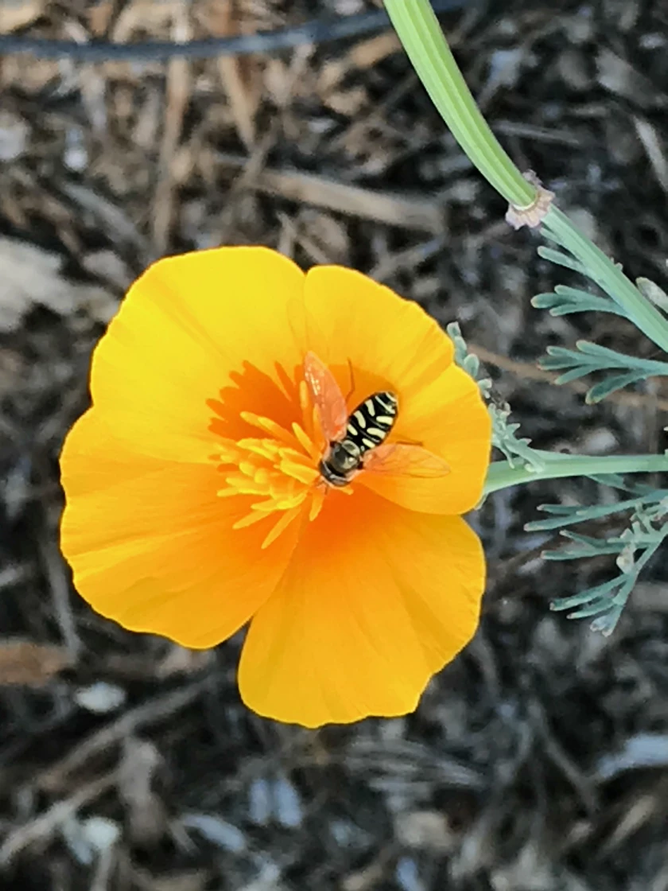
A hover fly mimics the patterns of a honey bee, visiting a California poppy, Eschscholzia californica.(Leah Taylor)
Ways to help pollinators
Our native bee pollinators need flowering plants, nesting and overwintering sites, and a habitat free from pesticides to survive. Picking the right plants is a vital step to supporting pollinators. Native plants are adapted to our local unique soil and climate, require little to no extra water to maintain, promote local biological diversity, and are attractive landscape plants. Visit one of the many San Diego plant nurseries that specialize in native plant landscapes to incorporate a variety of native wildflowers, such as these:
- Yarrow
- Pacific bleeding heart
- California poppy
- Dwarf checkerbloom
- Silver lupine
- Mountain blue penstemon
... and trees and shrubs:
- California false indigo tree
- Palo verde
- Black sage
- Blueblossom
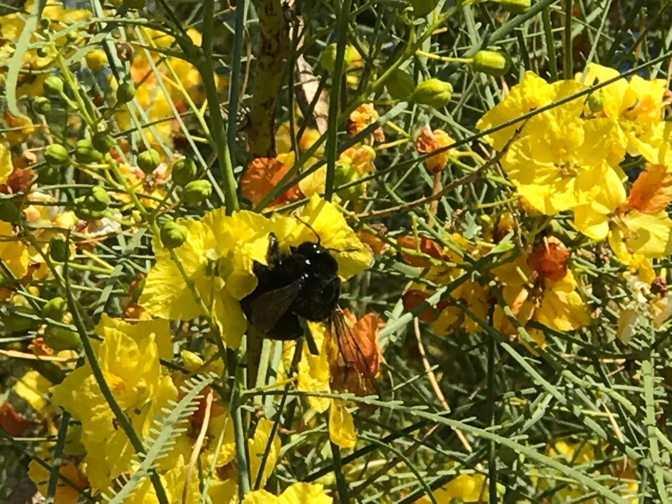
Carpenter bees love the wide-open flowers of Parkinsonia aculeata, a native Palo Verde tree.(Leah Taylor)
A small gesture with a big impact is to provide bees, butterflies and other pollinators with a water source, such as a shallow pie dish with marbles, filled halfway. The marbles create a landing spot and prevent accidental drowning.
Pesticides — organic or conventional — have huge impacts on nontarget pests when not applied correctly. Follow all label directions from any products you use, and implement an integrated pest management (IPM) strategy to manage target pests while protecting beneficial insects and pollinators in your spaces. Pollinators also need advocates like you, who change their landscapes by creating and maintaining habitats optimized to support pollinators. Visit resources at the UCCE San Diego Pollinator Project, Xerces Society, and the California Native Plant Society - San Diego chapter for more pollinator identification and planting guides.
Taylor is a California Master Beekeeper and Master Gardener Program Coordinator.

